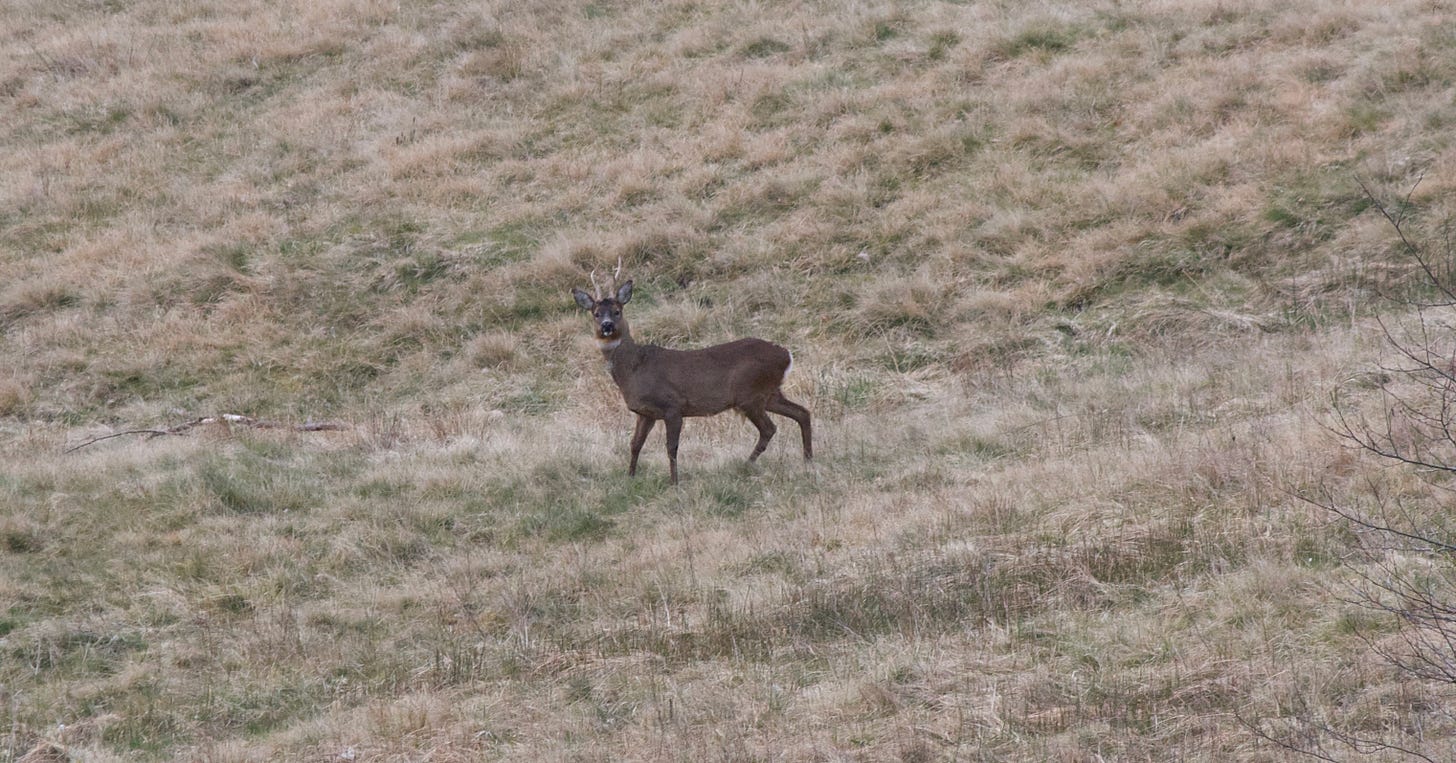National Highways has explained that 500,000 out of 850,000 newly planted tree saplings died along a 21 mile stretch of road near Cambridge.
They’ve faced slightly unfair criticism because the summer of 2022 did face a particularly severe drought coupled with the hottest days on record, which was no more predicted than any other summer. Often new plantings are too close together anyway, so the fact a third did survive is one good thing, at least.
However it does highlight to me a few wider issues with establishing new woodland:
Trees are often planted into valuable grasslands without due consideration or ecological advice from surveyors and ecologists.
Planting saplings is a high labour, high cost method of growing.
Planting in this way requires a lot of stakes and tree guards - the latter a concern due to the use of plastic, though that can be reused for many years.
High risk of failure if we face a drought in the summer of the first year, even if the trees were planted in winter.
New woodland is often aesthetically regimental which doesn’t matter that much for wildlife, though I would suggest there is more technical reason and benefit to the natural patterns of woodland than we give credit. As an example, are woods with lines of trees as resilient to strong winds?
If we apply the wild way lens to this common practice it’s fairly easy to see where this method of establishing new woods is imperfect.
It is missing the in-between stage of grass to woodland: scrub.
In the wild around the world, ecosystems are a patchwork of habitats formed by different factors such as the depth and type of soil, rainfall and ground water, and grazing from herbivores such as deer and rabbits (particularly in the UK due to a significant lack of true wild habitat).
Temperate woodland tends to form in deeper soils with higher rainfall. Herbivores are a problem in countries like the UK where natural indigenous predators to keep them in check, such as lynx and wolves, have been wiped to extinction by hunting and habitat loss by humans. We’ve also introduced huge numbers of additional herbivores for food: sheep, horses, cows etc. So we’re slightly overrun with herbivores stopping saplings from growing unless they are well protected.
But I’ll focus on deer and rabbits, which I have to say are not all negative because in the right balance, they keep grasslands open, creating that wonderful patchwork mix of habitats other wildlife needs.
A cheaper and easier way to grow a woodland is by following the wild way: from seed. Seeds are incredibly cheap, require virtually no time, effort, lower cost, no artificial watering or unnecessary carbon use to grow on.
At this point you’ll be rolling your eyes thinking “the seedlings will just be eaten”.
The key is that I would sow the woodland in 5-10 years time, after I have established a mix of scrub and grassland.
A mix is important, not just for a balanced ecosystem but because rabbits and deer need something to graze. On our farm, while they live in the woods too, they do tend to graze lush growth of our grasslands and woodland edges more.
What they don’t eat are:
Gorse, Ulex europaeus
Nettles, Urtica dioica
Bramble, Rubus spp.
Dog rose, Rosa canina
Blackthorn or Sloe, Prunus spinosa
Wild crab apple, Malus sylvestris
Hawthorn, Crataegus monogyna
Holly, Ilex aquifolium
On our farm and in the surrounding area these scrubland species are barely touched by rabbits and deer, in fact, blackthorn, bramble and crab apple are spreading into very dense stands in our wildest area. The obvious reason being that they are very spiky! Or painful, in the case of stinging nettles. Not a popular meal.
The tallest of these are crab apple, hawthorn and holly but they are still reasonably small trees in comparison to the likes of oak and birch. Others like bramble, dog rose and blackthorn are particularly low and open.
Allowing these scrubland species to takeover first offers larger trees a perfect nursery for their saplings to grow from seed, reasonably protected among spiky scrub. With seed it’s also easier to plant ten times as many potential trees for a fraction of the cost off planting on sapling with plastic guards. The patchwork of grassland offers herbivores and other grassland species something to easy to eat and live among away from the thorny nursery.
In some areas where seeds have been entirely depleted, we may have to make some sensible introductions of seed - always in conjunction with ecologists to avoid mistakes, such as creating a woodland over valuable grassland. In other areas surrounded by existing scrub and trees, it could simply be a case of leaving it to nature and waiting.
The benefits of allowing scrub to form first is that the area instantly starts locking in carbon while creating useful habitat for wildlife. Growing in this method won’t be perfect for every area but it would be worth more people giving it a go at large scale because of the lower effort, cost, much lower maintenance and instant environmental and wildlife benefits from growing scrub first.











So interesting. We have brambles on ‘steroids’ due to fertiliser run off from fields above. These can literally swamp young trees and no young trees have established in the large areas of bramble we have here.
Over 25 years ago started planting seed gathered from our existing mature trees and hedges into mole hills around the edges of our fields with great success. Now do it with wild flower seed. It’s addictive 😃